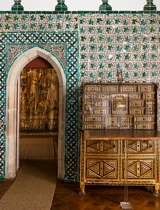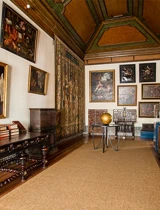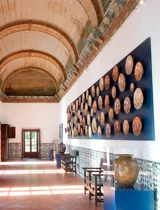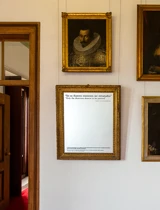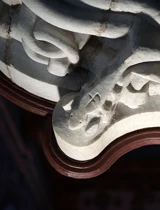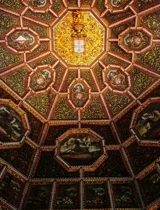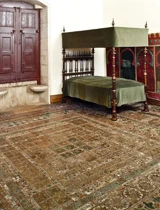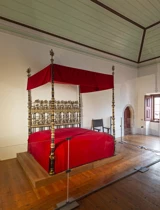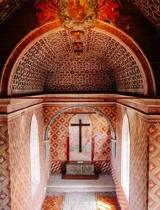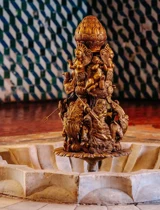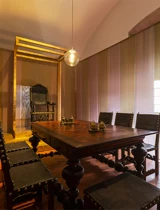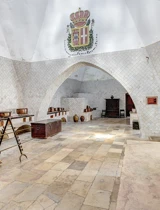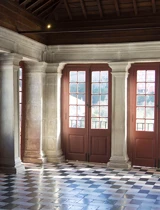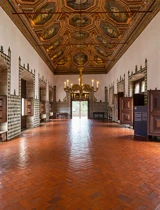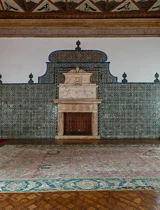
Gold Chamber
Gold Chamber
The third room in the palace of King João I and Queen Philippa of Lancaster.
This is where the sovereign could receive people of higher social status, a habit adopted by Queen Catarina of Austria (1507–1578). The king could also sleep here on the bed surrounded by his servants or a closer family member, who would sleep on the ground. This is how King Sebastião (1554–1578) used the room.
In the 15th and 16th centuries, it was covered in gold, but this decoration has been lost. In the 19th century, it was used as a dining room.
Discover the objects on display in this room.
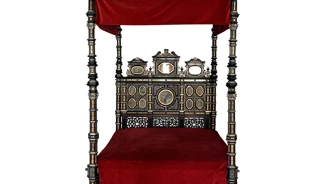
State Bed
- Italy (?), 17th-18th century
- Wood (chestnut and ebony), silvered brass, oil on copper, glass and fabric
- Inv. No. PNS3058
This Italian-inspired bed was a central item of state when receiving important people. Made in the 17th–early-18th century, it has a headboard decorated with medallions displaying mythological scenes. At the top, in silver-plated brass, stands the coat of arms of the former owners, the Counts of Sabugal. It was installed here in the 20th century.
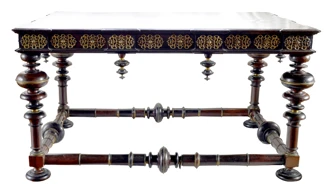
Buffet table
- Portugal, 17th-18th century
- Rosewood and metal
- Inv. No. PNS3094

Candlesticks
- Italy, Venice, 15th-16th century
- Copper and iron
- Inv. No. PNS6186/PNS6187
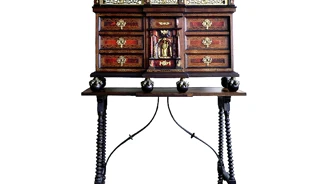
Cabinet
- Spain (?), 17th-18th century
- wood, tortoiseshell, copper
- Inv. No. PNS2933
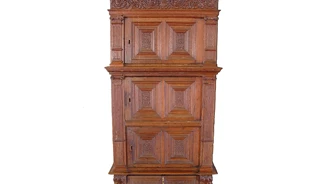
Wardrobe
- Holland, 1624
- Oak and metal
- Inv. No. PNS3107
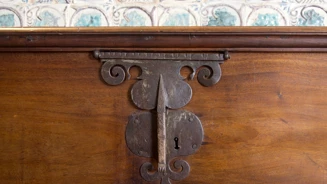
Chest
- Portugal, 18th century
- Wood and iron
- Inv. No. PNS3042

Tiles with Armillary Sphere
These tiles are found exclusively in the National Palace of Sintra, in the Gold Chamber and Grotesque and Lion Patios. They feature the armillary sphere, the emblem of King Manuel I (1495–1521), and were commissioned by the king in 1508–1509 from the workshop of Fernand Martínes Guijarro and Pedro de Herrera, his son, ceramicists from Seville.


